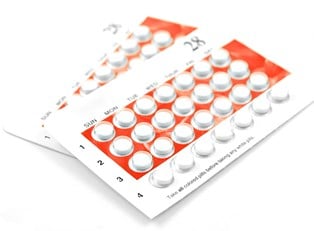Intrauterine devices (commonly referred to as IUDs) are a widely used form of birth control that have become a popular choice because of their ease of use and comfort. While these small, T-shaped products may not look like much, when used properly, they have the ability to prevent pregnancy for years at a time. This article will provide answers to questions you may have about IUDs—including how they work, why they’re so popular, and risks—but talk to your primary care doctor to determine whether IUDs are right for you.
History of IUDs
IUDs have been in development since the early 1900s. At this time, some researchers were working to develop inter-uterine devices that spanned between the uterus and the vagina, but because of their design, many of these caused pelvic inflammation. It’s for this reason that work began on developing an intra-uterine device for birth control that didn’t carry the same health risks. The first prototype was designed in 1909 in Germany, but the IUD in its contemporary form wouldn’t be invented until the 1960s in the United States. Although women were initially skeptical, the IUD has become one of the most popular forms of long-term birth control available on the market—with more than 180 million users across the globe.
Types of IUD
There are two primary types of intrauterine devices: hormonal and copper. As the name implies, hormonal IUDs work by continually secreting small amounts of progestin, which is a synthetic hormone commonly found in multiple types of birth control. The progestin prevents pregnancy primarily by causing a woman’s cervical mucus to thicken—leaving sperm unable to physically reach an egg. Additionally, hormonal IUDs may also completely prevent ovulation in some patients, adding another layer to their effectiveness.
On the other hand, copper IUDs release no hormones. Instead, they function by limiting sperm mobility and viability, thanks to the spermicidal effects of copper when introduced into the uterus. As with hormonal IUDs, this process is largely accomplished through the thickening of the cervical mucus. Some producers of copper IUDs may also use other types of metal as well—including silver or gold. When this occurs, the device will normally contain a metal core that’s wrapped in copper wire. Products like this have been shown to be longer lasting and more durable.
Benefits of IUDs
The most noticeable benefit of IUDs over other forms of birth control is their ease of use. Once the device has been inserted at a doctor’s office, there is no upkeep required, and many brands can stay effective for upwards of seven years. Additionally, IUDs are one of the most cost effective forms of birth control around. It’s true that the upfront expenses can be a bit high, but they require no additional purchases beyond that. Finally, IUDs are beneficial because their effects are reversible. Even if a woman has been using one for years, once it’s removed she will be able to conceive normally again.
Drawbacks of IUDs
Since their initial creation, IUDs have become much safer and more effective. However, as with all forms of birth control, there are some drawbacks to using them. For one, IUDs cannot prevent sexually transmitted infections (STIs). Some additional form of birth control will be necessary for truly safe sex. Some brands of copper IUDs may also cause heavier than normal periods, and although this poses no health risks to a woman, it can be a hassle. Finally, there is a small risk that an IUD will be unable to effectively prevent pregnancy. This risk is less than 1% with most brands, though.



